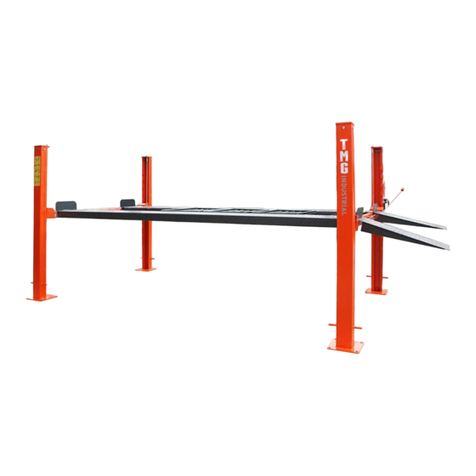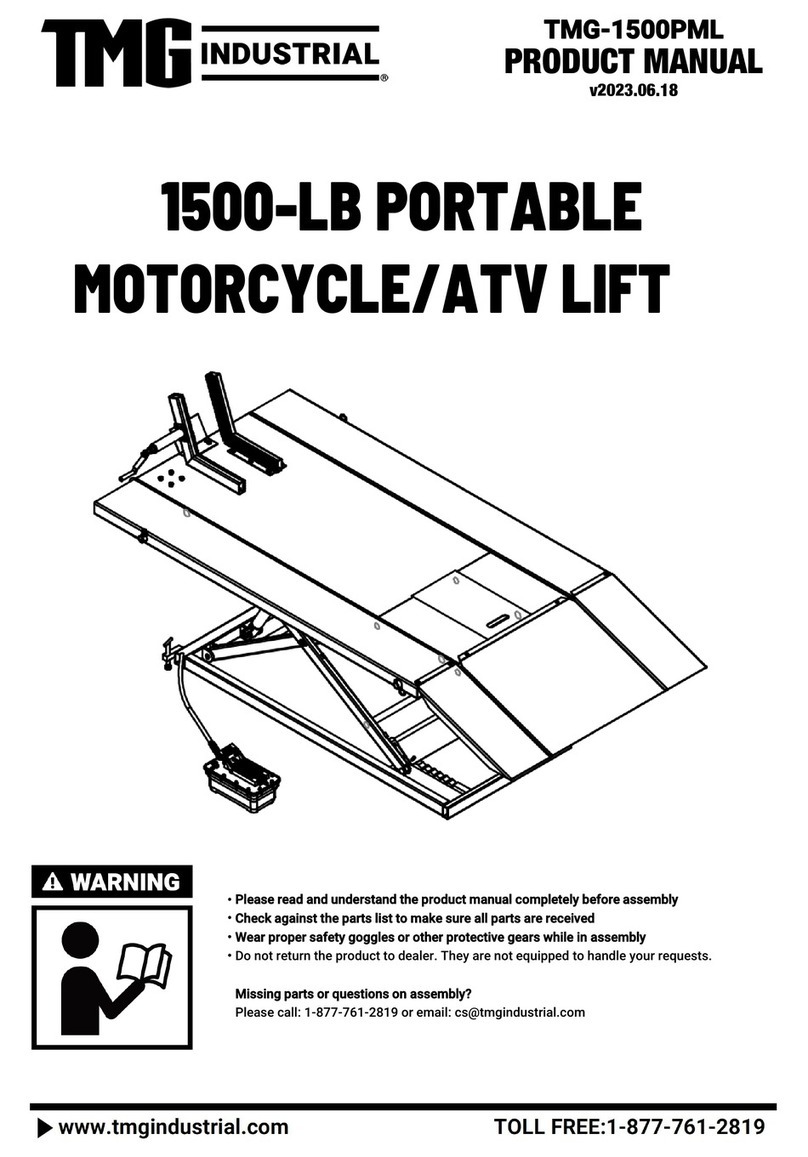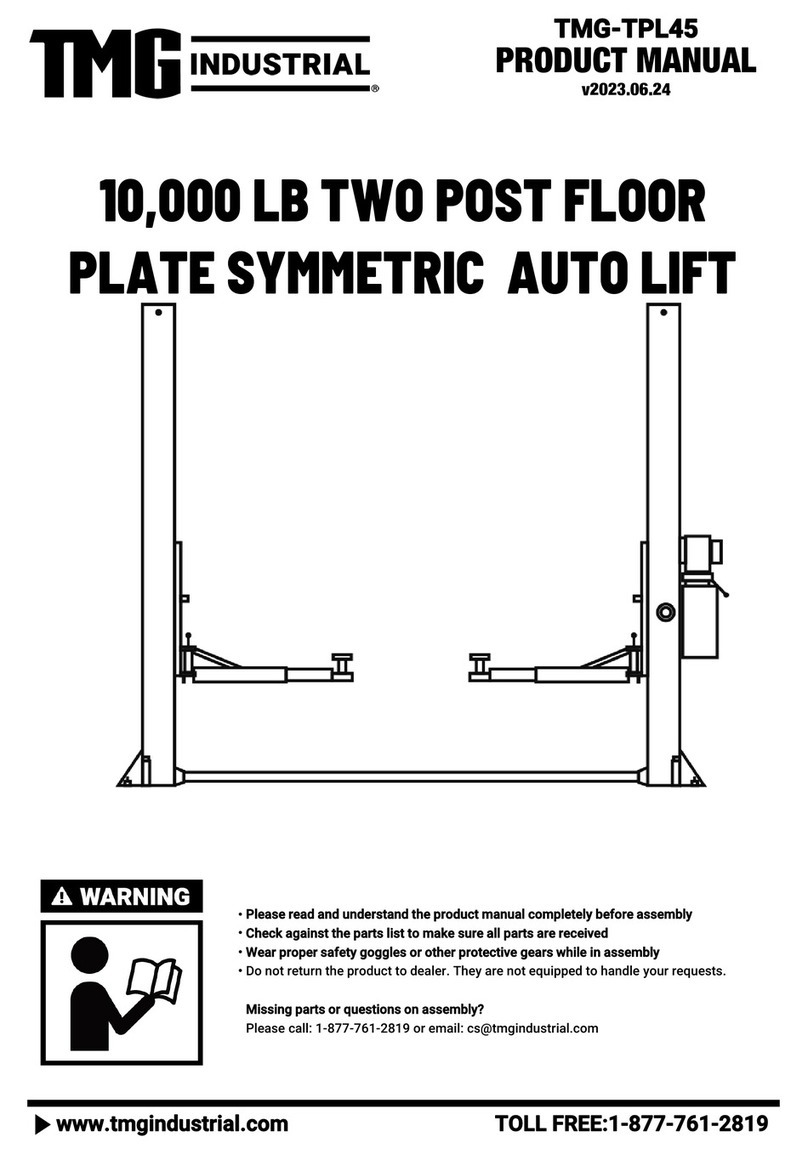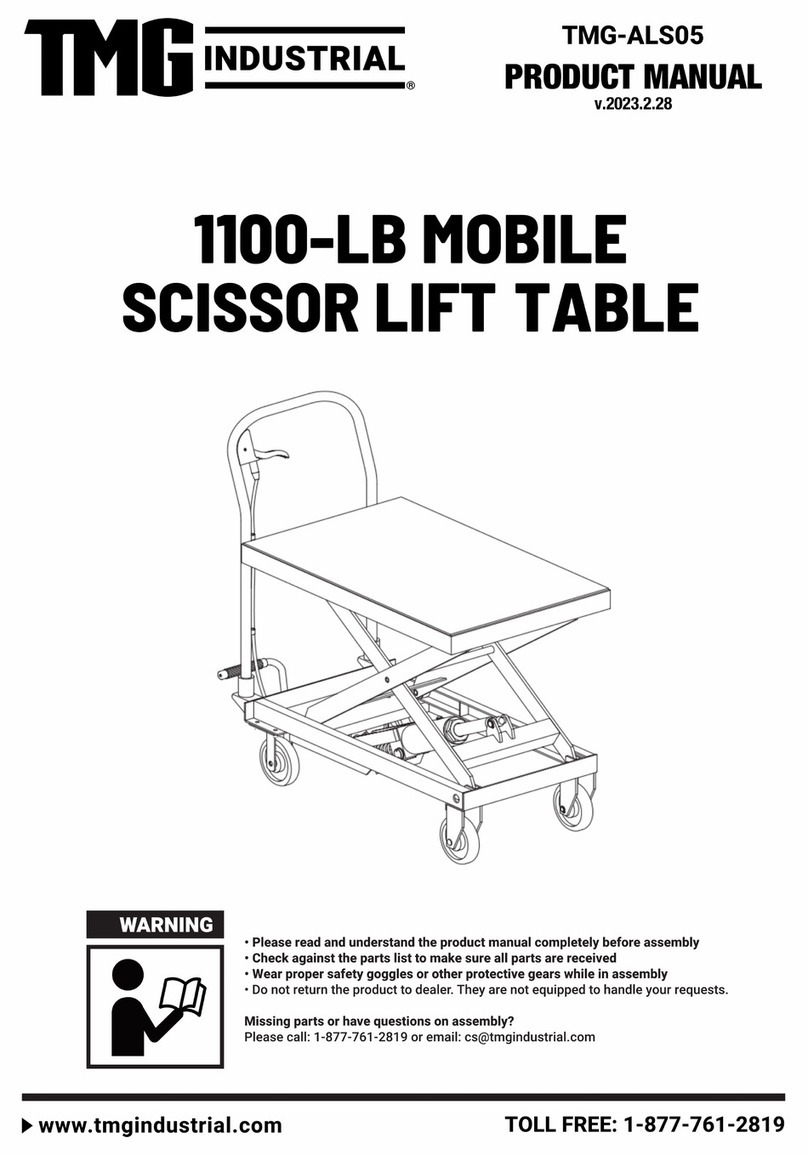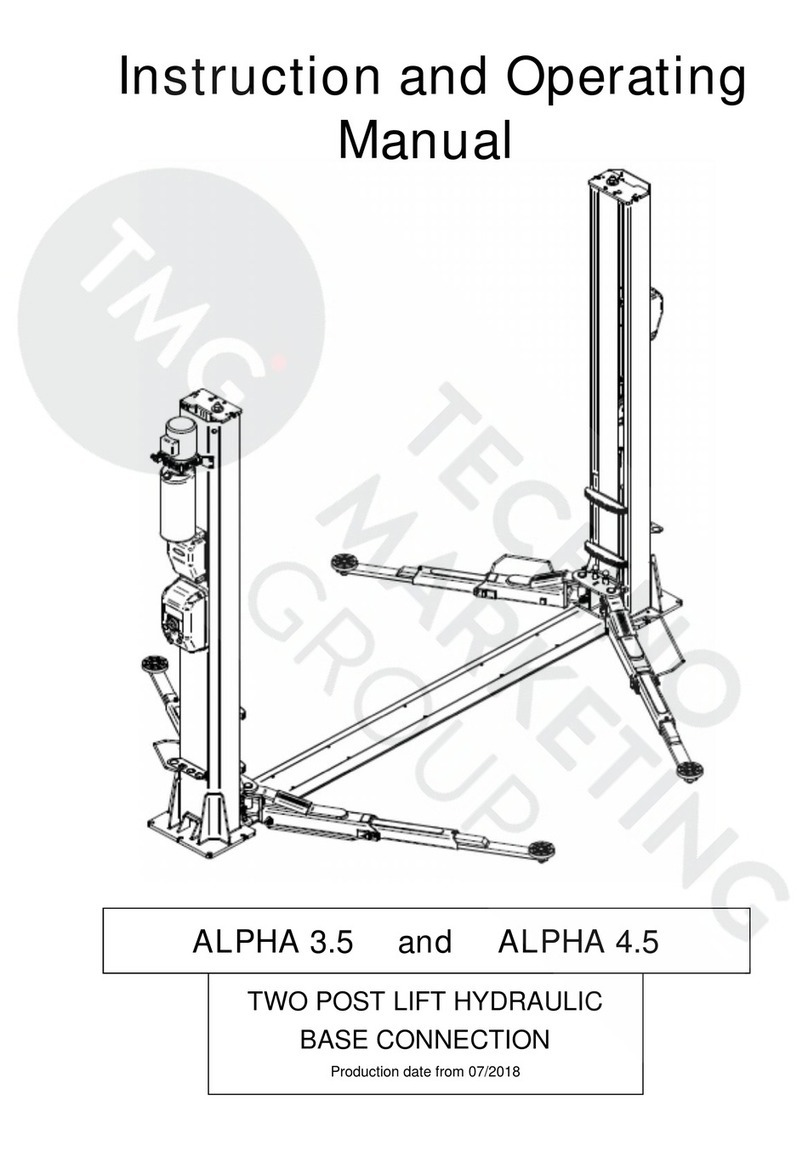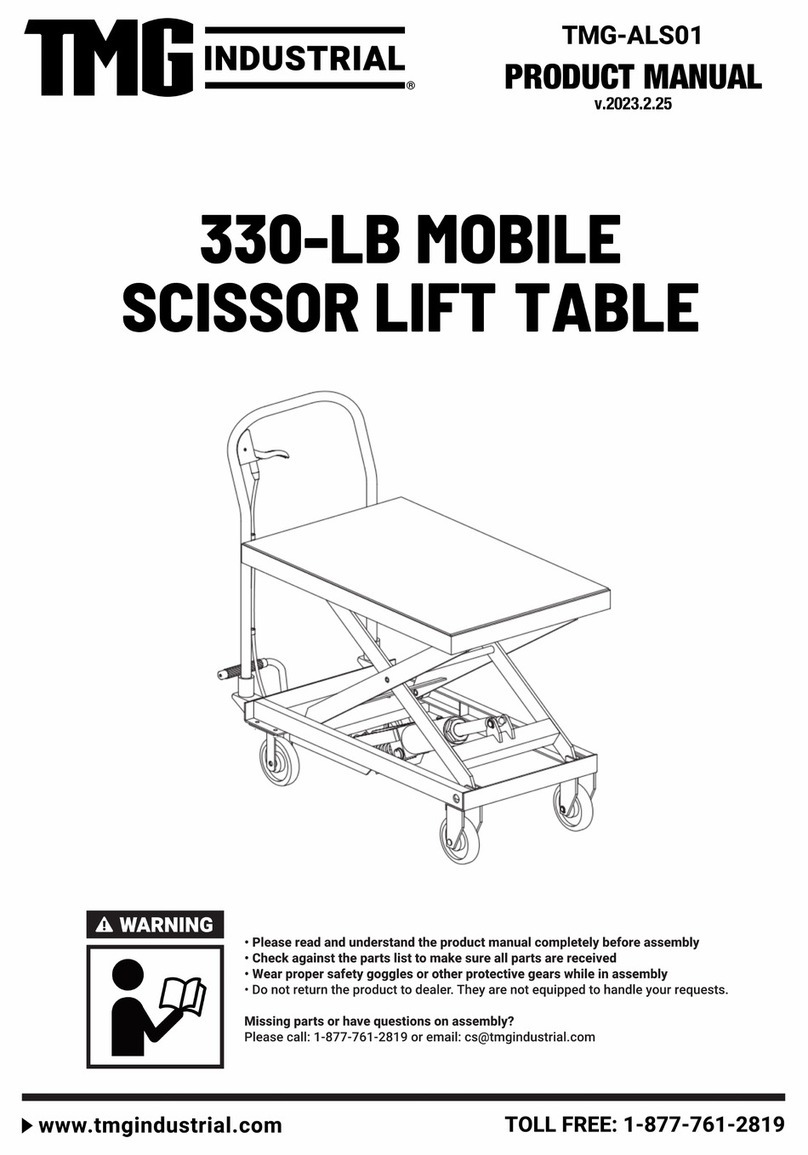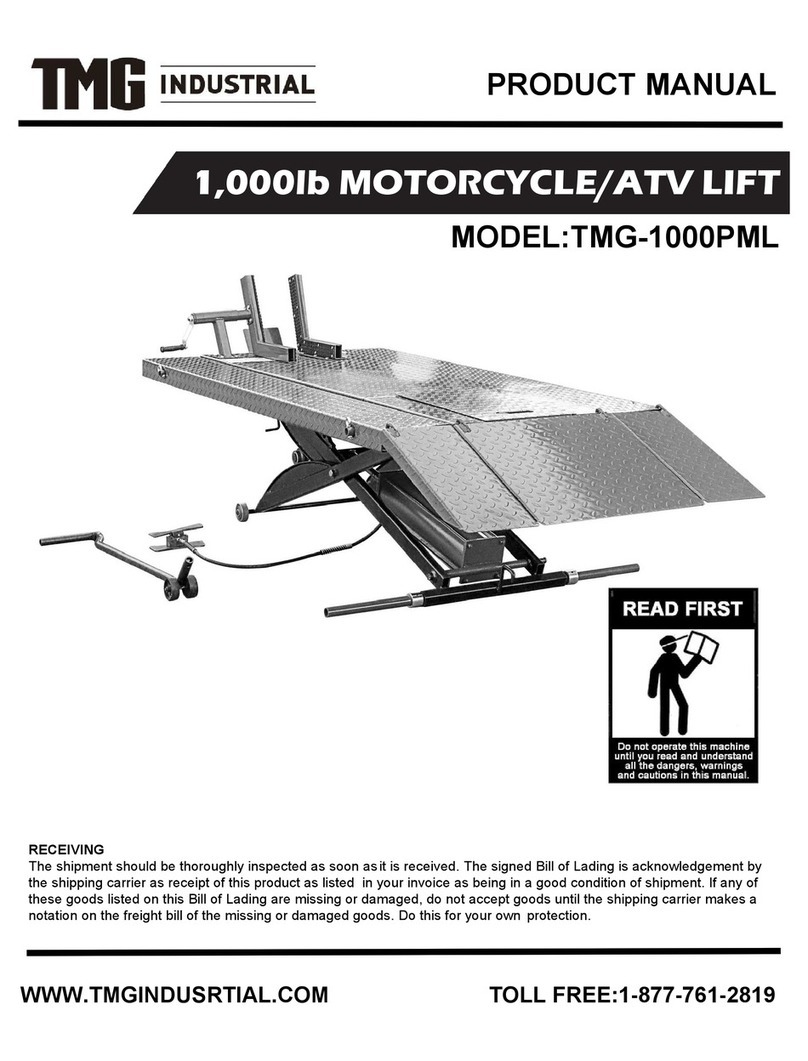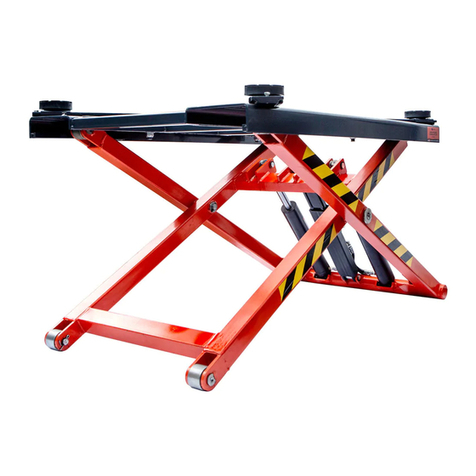
INTRODUCTION
1. Carefully remove the crating and packing materials. CAUTION! Be careful when cutting steel banding material
as items may become loose and fall causing personal harm or injury.
2. Check the voltage, phase, and proper amperage requirements for the motor shown on the motor plate.
Electrical work should be performed only by a certified electrician.
IMPORTANT SAFETY INSTRUCTIONS
Read these safety instructions entirely. Do not attempt to install this lift if you have never been trained on basic
automotive lift installation procedures. Never attempt to lift components without proper lifting tools such as forklift
or cranes. Stay clear of any moving parts that may fall and cause injury. When using your garage equipment, basic
safety precautions should always be followed, including the following:
1. Read and understand all instructions and all safety warnings before operating lift.
2. Care must be taken as burns can occur from touching hot parts.
3. Do not operate equipment with a damaged cord or if the equipment has been dropped or damaged until it has
been examined by a qualified service person.
4. Do not let a cord hang over the edge of the table, bench, or counter or come in contact with hot manifolds or
moving fan blades.
5. If an extension cord is necessary, a cord with a current rating equal to or more than that of the equipment should
be used. Cords rated for less current than the equipment may overheat. Care should be taken to arrange the
cord so that it will not be tripped over or pulled.
6. Always unplug equipment from electrical outlet when not in use. Never use the cord to pull the plug from the
outlet. Grasp plug and pull to disconnect.
7. Let equipment cool completely before putting away. Loop cord loosely around equipment when storing.
8. To reduce the risk of fire, do not operate equipment in the vicinity of open containers of flammable liquids
(gasoline).
9. Adequate ventilation should be provided when working on operating internal combustion engines.
10. Keep hair, loose clothing, fingers, and all parts of body away from moving parts. Keep feet clear of lift when
lowering. Avoid pinch points.
11. DANGER! To reduce the risk of electric shock, do not use on wet surfaces or expose to rain. The
power unit used on this lift contains high volt-age. Disconnect power at the receptacle or at the
circuit breaker switch before performing any electrical repairs. Secure plug so that it cannot be
accidentally plugged in during service. or mark circuit breaker switch so that it cannot be
accidentally switched on during service.
12. Use only as described in this manual.Use only manufacturer’s recommended attachments.
13. ALWAYS WEAR SAFETY GLASSES. Everyday eyeglasses only have impact resistant lenses,
they are not safety glasses.
14. Consider work environment. Keep work area clean. Cluttered work areas invite injuries. Keep
areas well lit.
15. Guard against electric shock. This lift must be grounded while in use to protect operator from
electric shock. Never connect the green power cord wire to a live terminal. This is for ground only.
16. Only trained operators should operate this lift. All non-trained personnel should be kept away from the work area.
Never let non-trained personnel come in contact with, or operate lift.
17. DO NOT override self-closing lift controls.
18. Clear area if vehicle is in danger of falling.
19. ALWAYS make sure the safeties are engaged before attempting to work on or near a vehicle.
www.tmgindustrial.com 05/47 Toll Free:1-877-761-2819












